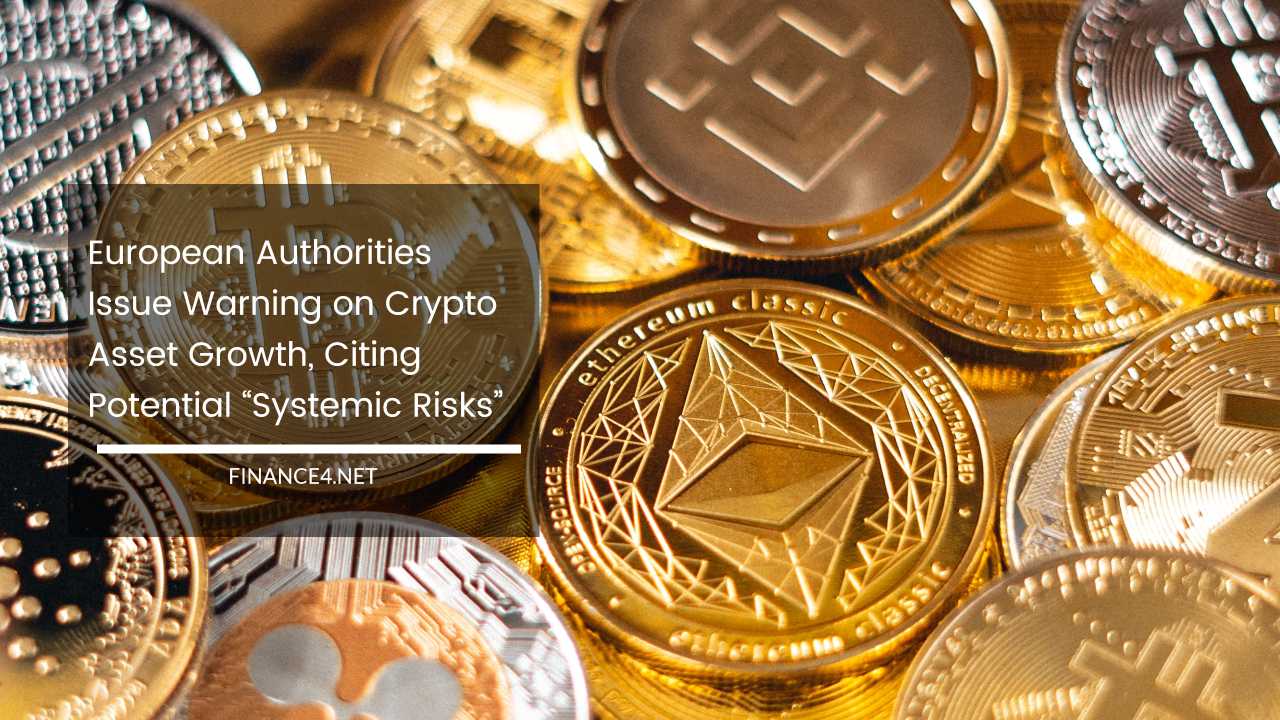European Authorities Issue Warning on Crypto Asset Growth, Citing Potential “Systemic Risks”

Crypto Asset
The recent developments in the crypto asset market have brought both good news and concerns. The turbulence experienced in the market last year had a limited impact on the overall financial system.
This limited impact can be attributed to the relatively low level of interconnections between the crypto asset market and the traditional financial system, as well as the real economy.
However, the authorities of the European Systemic Risk Board (ESRB), which is responsible for overseeing financial stability in the European Union, have expressed their concerns.
They have highlighted the exponential growth of crypto assets and their inherent volatility as factors that demand heightened vigilance.
The authorities emphasize the need to closely monitor these assets due to the potential systemic risks they may pose.
The ESRB’s cautionary stance reflects the recognition that the rapid expansion of the crypto asset market and its inherent volatility can have implications beyond its own ecosystem.
The interconnectedness of the financial system means that any disruptions or shocks originating from the crypto asset market could potentially reverberate and affect the broader economy.
European Authorities Raise Concerns Over Financial Institutions’ Collaboration with Crypto Industry
Amid recent developments where certain platforms within the crypto sphere are forging partnerships with banks to provide digital currencies to their customers, and other negotiations for similar agreements are underway, the authorities have issued a warning regarding the potential dangers of strengthening ties between financial entities and the crypto industry.
In a letter, they highlight the need for careful consideration given the evolving landscape and the increased legal certainty offered by the new Markets in Crypto-Assets (MiCA) regulation.
The letter emphasizes that risks could arise if there is a gradual escalation of interconnections between the crypto industry and the traditional financial system.
The authorities also express concerns regarding the potential challenges of identifying and addressing new interconnections promptly. They further note that similar innovative practices being widely adopted in traditional finance could pose additional risks.
The ESRB Raises Concerns about Potential Harmful Interconnections in the Crypto Asset Market
The European Systemic Risk Board (ESRB) has put forth hypotheses regarding the potential harmful interconnections that could arise within the crypto asset market.
One scenario they propose is if crypto assets experience a significant devaluation compared to stocks and bonds. In such a case, portfolio rebalancing would require selling traditional assets and purchasing crypto assets to maintain a constant allocation of the portfolio to crypto assets.
While this rebalancing could help cushion the decline in crypto assets, it would simultaneously create downward pressure on stock and bond prices as stocks and bonds are sold to facilitate the crypto asset purchases.
However, it is important to note that this scenario is currently considered to be more of an economic fiction due to the apparent lack of integration of crypto assets into the portfolios of both individual and institutional investors within the traditional financial system.
These proposals reflect the ESRB’s commitment to proactively address risks associated with the crypto asset market and ensure the stability of the broader financial system.
The introduction of measures to curb excessive leveraging and speculation seeks to mitigate potential systemic implications that could arise from volatility or disruptions within the industry.
While these recommendations are not legally enforceable, they carry significant weight. They emphasize the need to enhance the European Union’s capacity to monitor channels of contagion.
In simpler terms, this entails improving the ability to identify issues that arise in the crypto sphere and impact traditional financial systems, as well as problems that may emerge within the crypto asset sector itself.
This goal can be achieved by imposing stricter information requirements on traditional financial institutions, investment funds with exposure to cryptocurrencies, issuers of stablecoins (cryptocurrencies with stable value), and providers of digital wallet services.
Furthermore, the recommendations also propose restrictions on crypto companies lending tokens (fractions of cryptocurrency value, similar to shares) to their clients.
This practice is viewed as a means of engaging in leveraged bets. Additionally, the report calls for stablecoins to maintain higher reserve levels as a safety measure.
This suggestion stems from the crisis that occurred last year when TerraUSD experienced a sudden collapse, resulting in the loss of $18 billion and impacting thousands of investors who lost their savings.
The report highlights other notable bankruptcies within the sector over the past year, including Voyager, Three Arrows Capital, Babel Finance, Celsius, FTX, BlockFi, Core Scientific, and Genesis, painting a bleak picture for the industry.
The institution deliberately opts to consistently use the term “crypto assets” because it does not consider them to be currencies.
According to their perspective, a currency is a form of money that is supported by a legal system and widely accepted as a means of paying off debts. Money, in a broader sense, is widely acknowledged as a medium of exchange for goods and services, a unit of measurement for economic value, and a store of wealth.
The institution argues that neither unsupported tokens nor reserve-backed stablecoins possess the recognized attributes of money.
This viewpoint contrasts with the staunch proponents of bitcoin, ethereum, and other cryptocurrencies, who envision a future where these digital assets coexist with and potentially replace traditional forms of currency.
The notification arrives shortly after the European Central Bank issued a cautionary statement regarding the risks associated with what is commonly known as shadow banking.
This term encompasses a collection of high-risk financial entities or pension funds that have experienced continuous growth over the past decade.



